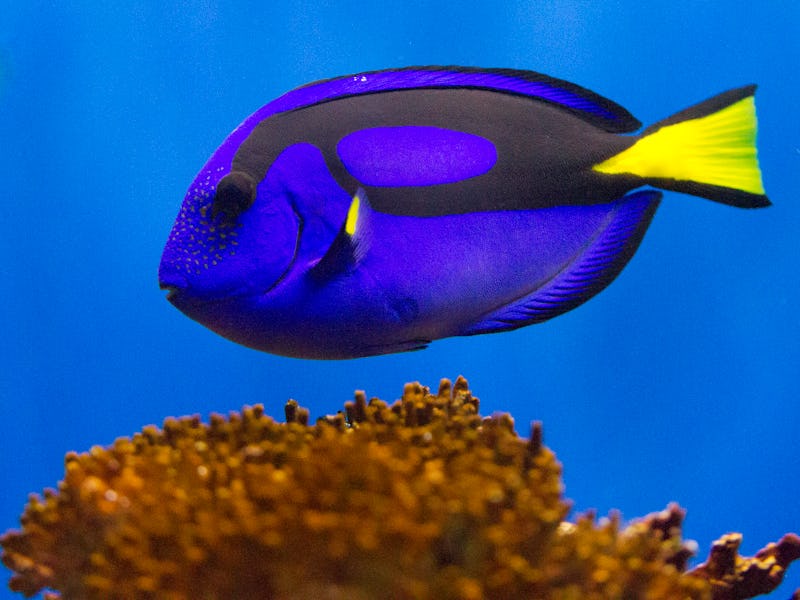Scientists Are Worried That the 'Finding Nemo' Sequel Will Hurt This Tropical Fish
If you must have a blue tang, make sure it wasn't taken from the wild.

With fish driven insane by life in aquariums and mad plans to escape to the ocean via a toilet flush, the message behind Finding Nemo is decisively that fish shouldn’t be taken off the reef and into human homes.
Unfortunately for the fish, our human need for cute things can’t be contained and this message was pretty much ignored — the release of the 2003 animated film triggered a huge demand for clownfish as pets.
Now, with the impending release of the sequel Finding Dory in June, conservationists are concerned that the movie will spark a similar frenzy for blue tang, the species that inspired Ellen DeGeneres’ forgetful protagonist.
According to environmental nonprofit, Saving Nemo, the film caused a 30 percent increase in people buying clownfish. What many of these new fish-owners don’t realize is how many of their pets aren’t bred in aquatic nurseries: Saving Nemo estimates that a million clownfish are taken from natural reefs every year for aquariums. This has equated to clownfish populations worldwide dropping by 75 percent in the 13 years since the movie’s release.
Dory and Nemo.
It’s also estimated that of the clownfish sold in aquariums (at least the aquariums in the United Kingdom, United States, and Australia) about half are bred in captivity while the other half are taken from the wild. While demand has increased, the cost of having a clownfish appears to be the same — your average pet store typically sells $13 classic white-striped Nemo while the purveyors of the “extremely rare and highly sought” (read: suspicious) can buy $160 uniquely patterned clownfish online.
The ignorance of many clownfish owners isn’t saved for just not knowing where their fish came from — many don’t realize that clownfish are some of the hardest pets to keep alive in personal aquariums.
Now, the marine biologists and conservationists behind Saving Nemo are worried that blue tang, one of the 70 species of surgeonfish which live in coral and rocky reefs, will be increasingly captured in the wild and sold as pets.
“The concern for us is that we are going to start seeing a resurgence in popularity for that population,” said Saving Nemo co-founder Anita Nedosyko to The Brisbane Times. “The regal blue tang are more susceptible to having their numbers reduced from the release of the movie.”
Nedoskyo is careful to note that her organization isn’t trying to discourage the general sale of “Dory” fish, rather that people need to demand accountability from shop owners about where they are sourcing the fish and to educate themselves about how to keep blue tang healthy and alive. While colorful fish are a pretty thing to have, humans are notoriously bad at keeping them alive: Blue tang pet message boards are filled with messages of the “Is my blue tang shy or dying? and “Help! Powder blue tang looks like it’s dying :(” variety.
While humans kill their blue tangs, the little guys have done a pretty good job at taking care of themselves in the wild. Living in coastal waters from New York to Australia, the population numbers of blue tangs are secure. This doesn’t mean that humans should be grabbing blue tangs in plastic bags on their next family scuba trip, but it does mean that their numbers are steady enough that if we don’t fuck up now they should be okay. This is compared to clownfish, which have been petitioned to be protected by the Endangered Species Act.